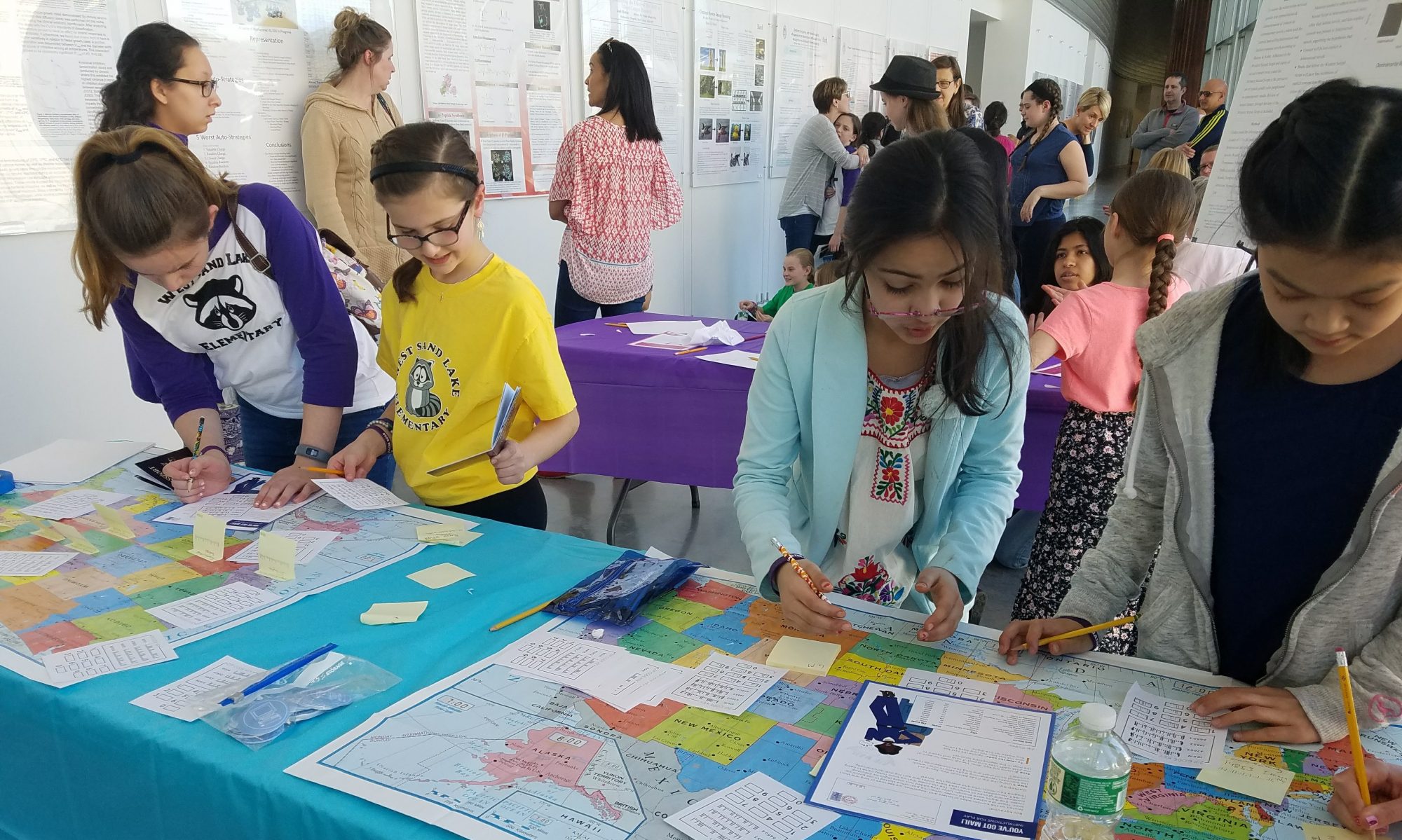It is CAMP Day 2! After having a bright start yesterday, Day 2 begins with CAMPers receiving more knowledge on tessellation.

In Frances‘s Math class, CAMPers created tessellations using a scalene triangle and then examined them to see how they demonstrated that the sum of the angles of a triangle is 180 degrees. CAMPers then went on to use that information to figure out the sum of angles in any polygon.


CAMPers are asked for what pairs they see on their tessellation works: “Where do the six triangles meet?”
They also label out their works and present them in class. Frances introduces to CAMPers the definition of polygons and different types of shapes (ex. hexagon, octagon, twenty-two gon).

In Computer Science class, CS Instructor Karen introduces p5js, a website that allows students to use Javascript to run codes. It allows students to write their own code and run it on the screen.

CAMPers are introduced to coding languages such as:
function setup ( ){createCanvas(___, ___);}
CAMPers are also introduced and tried out RGB color scheme. RGB stands for red, green, and blue. RGB decides what color it is and gives unique codes to each color. For instance, certain color green will have certain codes.

CAMPers also dive into the Pantone website for different color schemes. They later go back to the background color code on p5js. Background (R, G, B) with RGB set up will give different colors on the screen.
In Shuang‘s Art Class, CAMPers start designing works and prepare for their work presentation. CAMPers create their own collage by ripping paper polygons but not the corner.


With the principle, CAMPers can try out different polygons to see what the polygons bring to them. It might bring out different results! A right polygon might bring out a different result with a scalene polygon.
In Grace‘s Art Class, CAMPers talk about how tessellation patterns are used throughout history. CAMPers are introduced to Leo Ming Pei, an artist, and architect who designed the glass pyramid entrance of the Louvre (tessellation!).

CAMPers browse through images of Mesopotamia, Paris Louvre, Moroccan tiles, and Brazil sidewalks as their art inspirations. In hands-on activities, CAMPers work on their own tiny Louvre tessellation for Zine. The tessellation is built on cubes by use of rotation.
We end Day 2 with many activities that revolve around tessellations, CAMPers are now more familiar with the real-life examples of tessellations!

For more updates, follow us on:
Blog: https://bardmathcircle.org/
Facebook: @BardMathCircle
Instagram: @bardmathcircle
Twitter: @BardMathCircle

